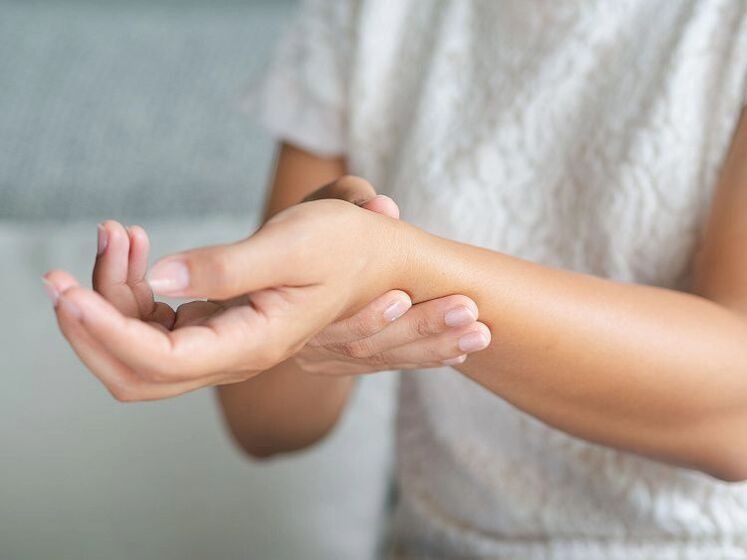
Osteoarthritis is often accompanied by arthritis, an inflammatory process in joint tissues. Arthritis involves destruction and deformity of a certain area. Both syndromes affect the patient's quality of life and need to be detected and treated promptly.
reason
Typically, degenerative joint diseases develop after exertion or as the body ages. Arthritis and arthritis have several common causes:
- genetic predisposition;
- infectious diseases with severe progression;
- Incorrect hormone levels in the body;
- autoimmune disease;
- Intense physical activity, excessive exertion;
- joint damage;
- congenital abnormalities in the development of joint tissue;
- complications after surgical treatment;
- alcohol abuse;
- hypothermia of the body;
- Frequent stressful situations.
Quote from experts
Over time, arthritis can lead to arthritis. And arthritis leads to arthritis. That is, these diseases often occur in pairs but can also occur individually as independent diseases. You just need to note that if joint disease is not treated, arthritis will appear.
What does arthritis mean in arthritis?
The inflammatory process is often detected when cartilage is destroyed. This may indicate the following problems in the body:
- Infectious concentrates with joint diseases, damage to the circulatory system and organs of the gastrointestinal tract are possible. This causes an inflammatory process in the joints;
- weakening of muscle and bone tissue. The patient had progressive instability in the upper and lower extremities;
- Weakened immunity, the body cannot cope with stimuli from the external environment;
- disruption of internal systems.
Level
There are several types of arthritis that can occur when cartilage is affected:
- reaction and progression when infected with pathogenic microorganisms. More common in people with chronic illness;
- Rheumatoid arthritis involves the spread of inflammation to connective tissues, causing limitations in mobility of the upper and lower limbs;
- crystals, progressing with impaired metabolism. Characterized by high salt concentration in the body;
- psoriasis, the risk of skin diseases increases. Arthritis is accompanied by inflammation and swelling in many parts of the body;
- The infectious process progresses against the background of various infections of an acute or chronic nature. Usually diagnosed in large joint tissues.
What can be confused with
Symptoms of arthritis are similar to those of lupus, Raynaud's disease, and fibromyalgia. It is manifested by chronic fatigue, elevated temperature, limited movement and pain.
How to get rid of arthritis symptoms with arthritis
To relieve the symptoms of the inflammatory process and improve your health, you should follow the following rules:
- stop drinking alcohol, drugs, and smoking;
- avoid stressful situations;
- normalize your diet;
- Daily exercise;
- walk in the fresh air more often;
- control the level of pressure in blood vessels;
- hardens in the morning;
- Avoid passive smoking.
When and which doctor to contact
A rheumatologist treats the inflammatory process in joint tissues. If the patient does not have the opportunity to consult a specialist in this profile, it is recommended to make an appointment with an orthopedist or traumatologist. You should seek help when you notice the first symptoms of the disease.
Arthrosis treatment of arthritis
Before starting treatment, a diagnosis is required. Doctors will conduct an external examination of the patient, interview them and prescribe blood and urine tests. If necessary, arthrography, radiography, magnetic resonance imaging and CT are used. Based on the information received, the patient will be given a course of treatment.
Treatment medicine
It is possible to eliminate symptoms in the early stages of the disease with the help of medication. Patients are prescribed a complex of drugs to achieve greater effectiveness:
- Non-steroidal anti-inflammatory drugs relieve pain in patients;
- Chondroprotectors accelerate cartilage recovery;
- Muscle relaxants eliminate spasms and discomfort.
Surgery
In severe cases, when there are complications or in the final stages of the disease, surgical treatment is indicated. Patients may have the affected joint tissue removed and an implant or synovectomy placed.
Conservation therapy
Along with medication, patients are prescribed massage therapy, a fitness course and diet correction. Therapeutic baths help relieve pain. Physiotherapy prevents the development of the inflammatory process and accelerates the recovery of affected joint tissues.






























